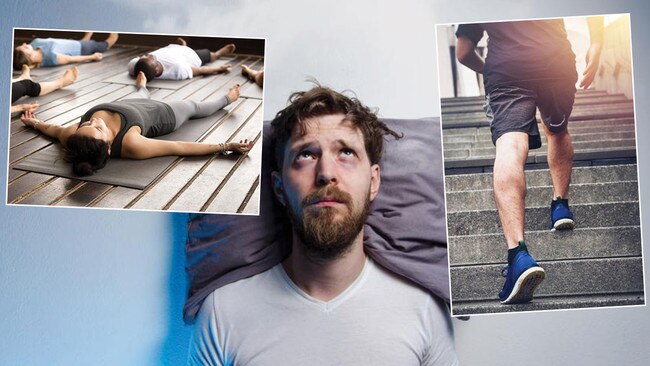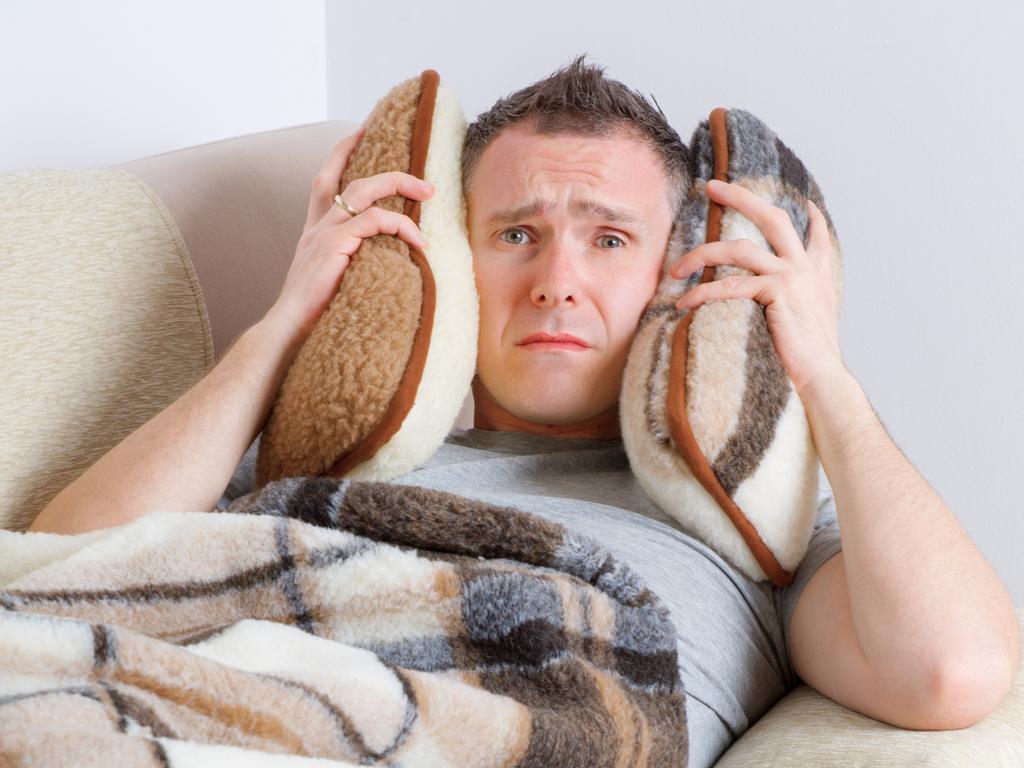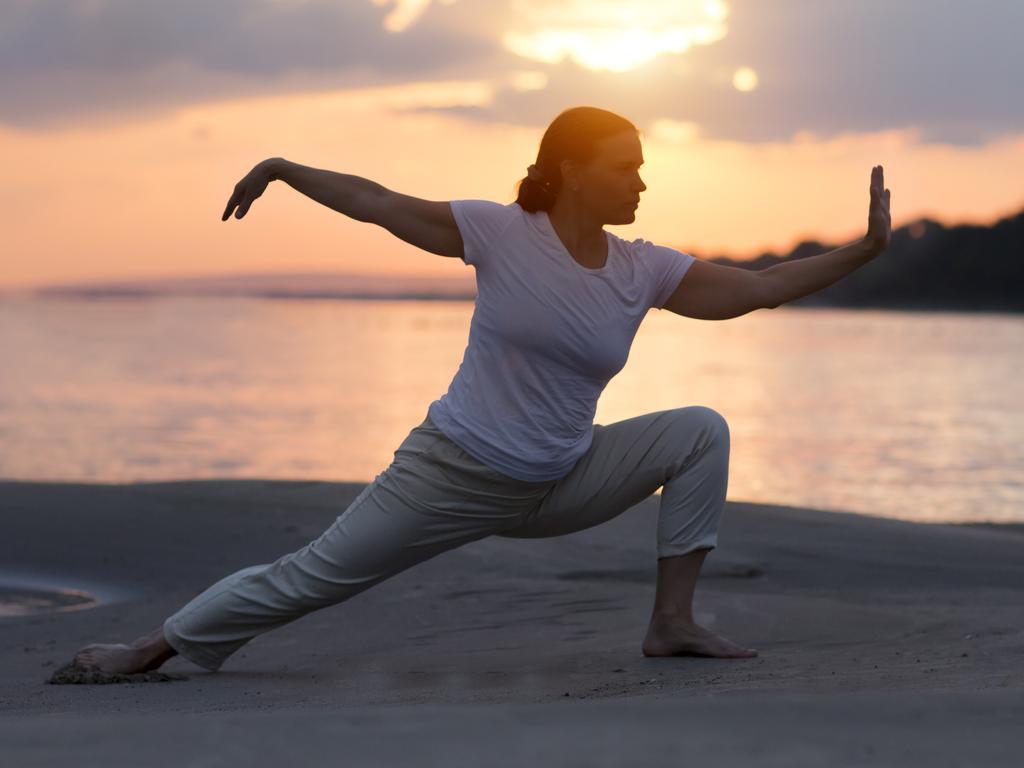The best ways to exercise to beat your insomnia
Too tired to exercise? That could be exactly why you can’t get a decent night’s shut-eye. Here are the best ways to do it.

Sleep issues affect as many as one in three UK adults, but in the past 12 months there has been a spiralling number reporting that they are failing to get a regular good night’s rest. In a study of 843 adults at Royal Brompton and Harefield hospitals last autumn, researchers found that 70 per cent of respondents felt that their sleep patterns had changed during the previous months and fewer than half reported that they were refreshed when they woke.
Feeling tired and tetchy as a result is only part of the problem. Chronic sleep deprivation has a profound negative effect on our mental and physical health, with researchers showing it to be associated with a raised risk of everything from type 2 diabetes and depression to heart disease and hypertension.
But what if there were a means of mitigating some of the unhealthy outcomes of poor sleep? That question was posed by the authors of a new study involving 380,055 middle-aged UK men and women and published in the British Journal of Sports Medicine. Emmanuel Stamatakis, professor of physical activity, lifestyle and population health at the University of Sydney and the lead author of the paper conducted with University College London researchers, says it shows that a daily dose of physical activity is the key to offsetting sleep-related damage.
Using data from the UK Biobank, Stamatakis and his team awarded participants a sleep score that was calculated by assessing their regular nightly sleep patterns. They then analysed exercise habits of the same participants. Over the next 11 years, Stamatakis tracked the participants to find out if and how exercise — or a lack of it — impacted their risk of ill-health and mortality.
The results showed, perhaps unsurprisingly, that poor sleepers had the least favourable health profiles and were more likely to die of any cause over the course of the study, and that their mortality risk was higher if they didn’t meet the minimum 150 minutes of moderate-intensity weekly activity.
Getting physical
Yet among those who didn’t sleep well but did achieve even these lower levels of activity recommended by the WHO, the sleep-related health risks were significantly reduced. “It does seem likely that the coexistence of poor sleep patterns and physical inactivity is particularly harmful as we found that together they influenced mortality risk in a synergistic way,” Stamatakis says.
It follows, he says, that by making positive changes to one of these health behaviours, you might influence the adverse outcomes of the other.
“You cannot simply decide to have a good night’s sleep and make it happen, but you can decide to go for a half-an-hour walk on a regular basis,” he says. “It won’t undo the risks of poor sleep altogether, but physical activity may help to neutralise some of the health consequences of inadequate sleep.”
Quite how exercise counters poor sleep was not examined in the study, although Stamatakis suspects it is because sleep and physical activity work on the same cardiovascular and metabolic pathways, albeit in opposing ways.
“Chronic short sleep and chronic physical inactivity both cause endocrine and metabolic dysfunction, increase systemic inflammation and cause stimulation of the sympathetic nervous system [SNS],” he says.
“On the flip side of that, regular exercise stimulates the SNS, improves metabolic function and reduces inflammation to reduce the risks associated with poor sleep, offsetting the damage.”
Not every poor sleeper who was physically active experienced the same health gains. Stamatakis says the most surprising and as yet unexplained finding was that participants who met or exceeded the upper threshold of WHO activity guidelines, working out at a moderate intensity for 300 minutes a week or vigorously for 150 minutes a week, did not seem to offset the side effects of their restless nights.
Start small
“People with more severe sleep problems often suffer from fatigue and daytime sleepiness, so their body is compromised and it is not necessarily easy for them to be more physically active,” he says. “For them it is better to start with much smaller increments of physical activity, such as 10 to 20 minutes of brisk walking per day.”
By ramping up your exercise you will not only improve your health prognosis, but will sleep better too. “Anyone who experiences mild to moderate sleep disturbances but who currently doesn’t do much exercise would benefit from increasing their current levels,” he says. Here are the rules to a good sleep workout:
1. Try muscle relaxation before bed
“The demon of sleep is cognitive arousal and ruminating thoughts,” says Kevin Morgan, a sleep researcher and emeritus professor of psychology at Loughborough University. “With meditation, or just sitting quietly, you can drive thoughts out of your mind and put your head in the right place for sleep.” Progressive muscle relaxation, the practice of tensing or tightening one muscle group at a time, then consciously releasing the tension, is also helpful, Morgan says.
2. Practise t’ai chi or qigong
Ancient martial arts that induce a sense of calm and relaxation, including t’ai chi and qigong, have been shown to improve sleep quality and duration for people with insomnia. Elderly people who were asked to practise t’ai chi for 1 and a half to 3 hours each week for six months experienced significantly improved sleep quality. “Activities like t’ai chi can induce a sense of self-efficacy, a belief that you are doing something positive to help your sleep,” Morgan says. “They can have a very positive impact for some people.”
3. Walk an extra 500 steps every week
Any kind of moderate-intensity activity can improve your sleep patterns. “The key thing is to choose something that you enjoy and that you can accomplish easily,” Stamatakis says. “Walking is ideal.” If aiming for 10,000 daily steps seems a stretch, then start by increasing in 500 weekly step increments; researchers found this to have a positive effect on sleep quality for menopausal women.
4. Go for a run, swim or cycle
A regular dose of aerobic activity could improve your sleep patterns, according to a study of female students aged 18-26 conducted last year. For this trial, the women completed three one-hour sessions – including a ten-minute warm-up of marching, 35 minutes of basic aerobic exercises and a 15-minute cool-down – weekly for eight consecutive weeks. After two months, all aspects of sleep quality and duration had improved.
5. It’s fine to work out in the evening
In a study from Charles Sturt University in Australia, published in the journal Experimental Physiology, researchers found that even a 30-minute HIIT session performed between 7pm and 9pm did not negatively affect subsequent sleep, and may even come with the added bonus of reducing hunger pangs as levels of the hunger-stimulating hormone ghrelin were reduced. In another trial, people who worked out at 8pm or later were shown to fall asleep more quickly and wake up feeling well rested.
6. Try yoga and pilates
Both the mindfulness and deep breathing aspects of yoga practice can induce a sense of calm. “It comes down to the inner focus of yoga and its ability to help people rid themselves of worrying thoughts,” Morgan says. Researchers reporting in the journal Frontiers in Medicine found that regular pilates significantly improved sleep quality in healthy women under 40.
The Times







To join the conversation, please log in. Don't have an account? Register
Join the conversation, you are commenting as Logout